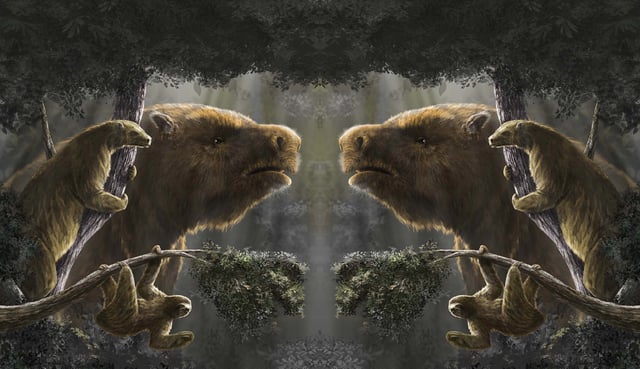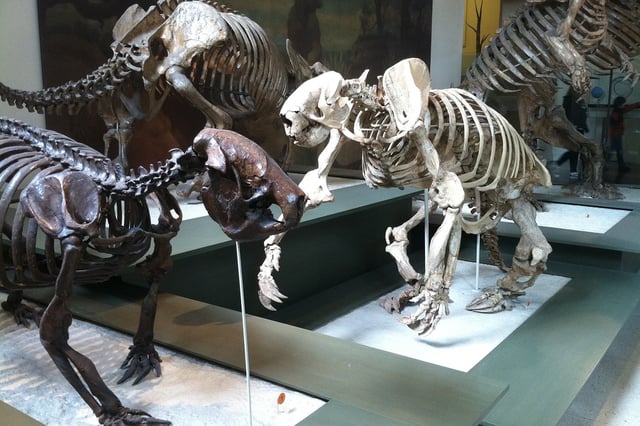Overview
- A study published in *Science* used ancient DNA, fossil analysis, and climate data to map sloth evolution over 35 million years.
- Researchers found that arboreal sloths remained small due to branch weight limits, while ground-dwelling species evolved into massive forms like the 8,000-pound Megatherium.
- Climate cycles, such as Miocene warming and Pleistocene cooling, drove sloth size changes, with warming favoring smaller species and cooling promoting gigantism.
- Some ground sloths developed unique adaptations, including osteoderms for defense and semi-aquatic traits for coastal environments.
- Human arrival in the Americas 15,000 years ago coincided with the extinction of large ground sloths, while Caribbean tree sloths persisted until about 4,500 years ago.

